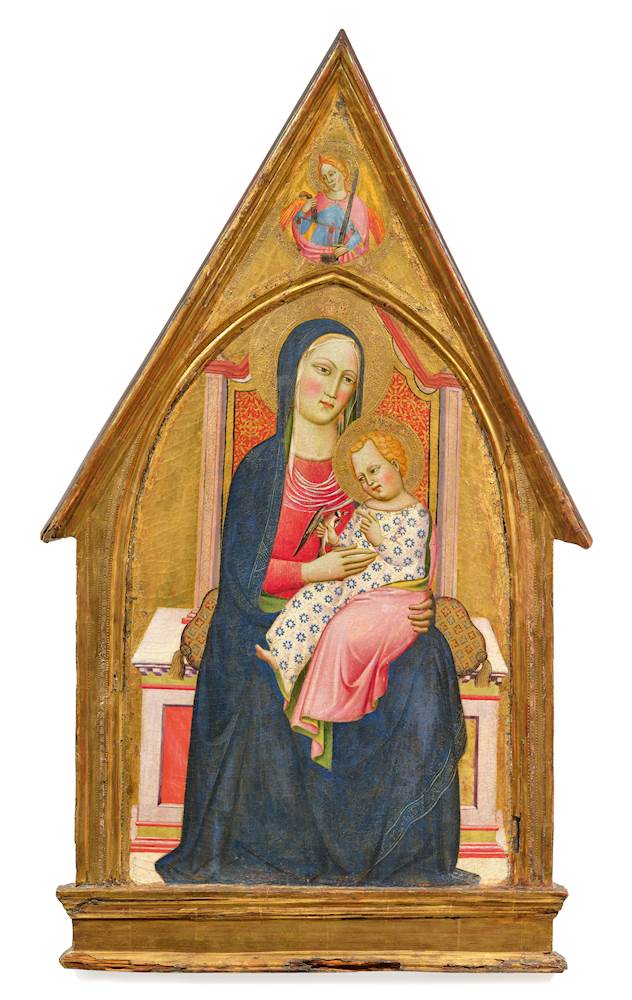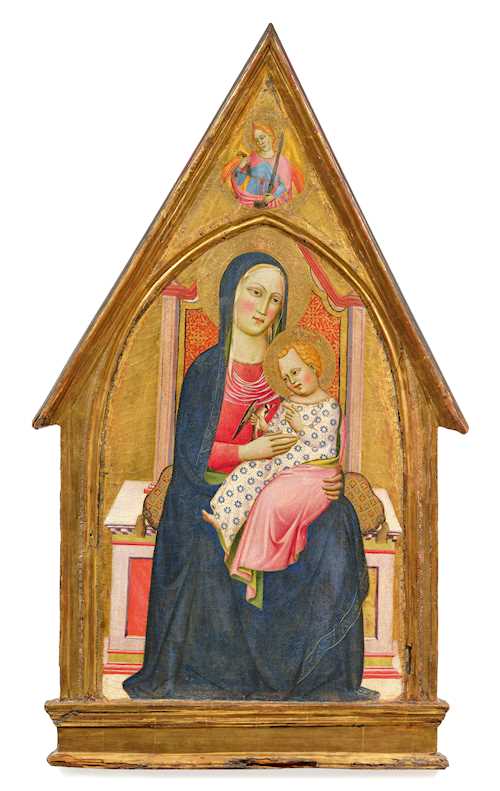
Lot 3001* - A210 Tableaux de Maîtres Anciens - vendredi, 20. septembre 2024, 14h00
TOMMASO DEL MAZZA
Provenance:
- Private collection of Michele Lazzaroni, Paris.
- European private collection.
- Sale Lempertz, Cologne, 18.11.2017, lot 2002.
- European private collection.
Literature:
- Beneth A. Jones: The Bob Jones University Collection of Religious Paintings. Supplement to the Catalogue of the Art Collection. Paintings Acquired 1963–1968, Greenville (SC) 1968, p. 9.
- Burton B. Fredericksen and Federico Zeri: Census of Pre-Nineteenth Century Italian Paintings in North American Public Collections, Cambridge (Mass.) 1972, p. 136.
- Miklos Boskovits: La pittura Fiorentina alla viglia del Rinascimento, Florence 1975, pp. 106 and 230, note 99, p. 384.
- Simona Pasquinucci and Barbara Deimling: Tradition and Innovation in Florentine Trecento Painting: Giovanni Bonsi-Tommaso del Mazza, in: Miklos Boskovits (ed.): Corpus of Florentine Painting IV/VIII, Florence 2000, pp. 201–202.
- Barbara Deimling / John M. Nolan / Carl Brandon Strehlke / Yvonne Szafran: Discovering a Pre-Renaissance Master. Tommaso del Mazza, Greenville 2008, p. 72.
The goldfinch, which the Christ Child holds in his hand, is of particular iconographic significance, with the red mark on its head symbolising the suffering of Jesus during the Passion. The impending sacrifice of Christ is alluded to by the innocent fragility of the goldfinch. In 14th-century Italy, often beset by the plague, goldfinches were also regarded as bringers of health and thus as a symbol of healing and redemption. This motif was later taken up in Renaissance painting, including by Raphael in his ‘Madonna del Cardellino’ (Uffizi, Florence, inv. no. 1890 n. 1447).
The panel offered here was once part of a larger altarpiece: the lateral panel with the Baptist is probably in a private collection in London, while the panel with St Peter is possibly the one in the collection of the Bob Jones University Gallery (inv. no. 63.331.29; see Pasquinucci and Deimling 2000, pp. 199–207).
A panel in a Tuscan private collection with a depiction of the ‘Mystic Marriage of St Catherine of Alexandria’, which can also be attributed to Tommaso del Mazza's early work, shows strong stylistic parallels (see Pasquinucci and Deimling 2000, pp. 194–196). The artist's early period still bore the influence of the art of the Florentine Orcagna brothers (Andrea di Cione di Arcangelo (c. 1308–1368) and his brothers Nardo and Jacopo), under whom Tommaso del Mazza had received his training. With its simplified and abstracted forms and statuary, this Madonna shows stylistic references to another ‘Orcagnesco’, Giovanni del Biondo (1356–1399), and places the panel at a time when Tommaso del Mazza had not yet embraced the artistic preferences of Niccolò di Pietro Gerini (1340–1414) and the late Gothic linear tendencies of Agnolo Gaddi (1350–1396). Prof. Gaudenz Freuler therefore considers a date of around 1375 to be probable, a view shared by Barbara Deimling (2000), who suggests a date of around 1375–80.
The known œuvre of Tommaso del Mazza, which continually developed in elegance and artistic quality, as well as his extensive artistic activity for the Datini family of merchants in Prato, attest to his remarkable artistic status within Florentine painting at the end of the 14th century.
We would like to thank Prof. Dr Gaudenz Freuler for his scholarly contribution to the cataloguing of this painting.
CHF 150 000 / 250 000 | (€ 154 640 / 257 730)
Vendu pour CHF 187 500 (frais inclus)
Aucune responsabilité n'est prise quant à l´exactitude de ces informations.

